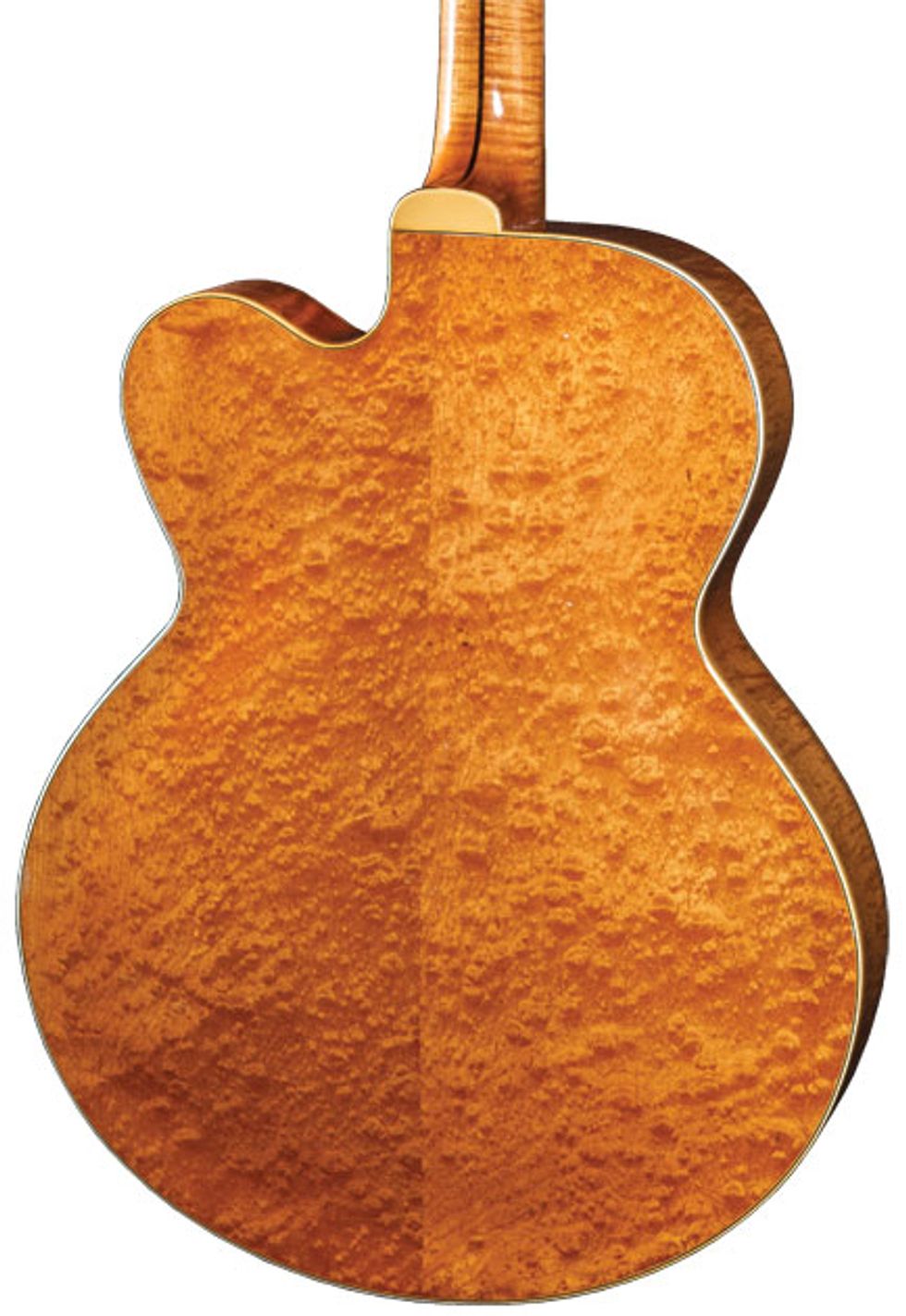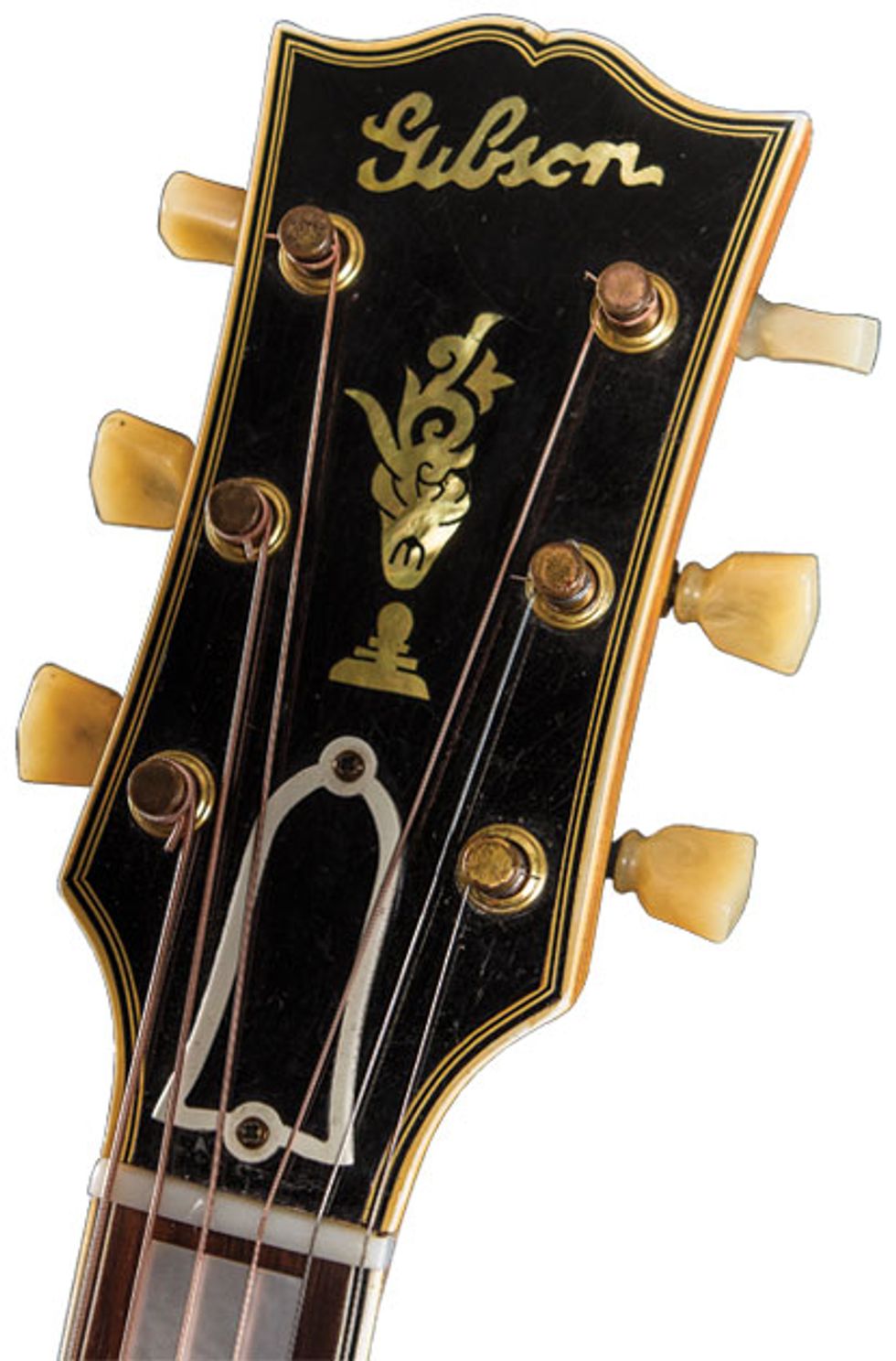With their carved tops and backs, Orville Gibson’s fretted musical instruments were inspired by the construction methods used for violins, and by the late 1890s his groundbreaking designs had brought the company he founded great success. Lloyd Loar, Gibson’s acoustic engineer, took Orville’s inspiration a step further in the early 1920s by designing a family of high-quality instruments with violin-style f-holes. This “Master Model” group created by Loar and his team included the F-5 mandolin, the H-5 mandola, the K-5 mandocello, and the L-5 guitar.
The first 16"-wide L-5s were made at the end of 1922 and received similar decorative adornments to the F-5, including the famous flowerpot headstock inlay. The 16" L-5 began to change subtly after Loar left the company in 1924, with the most obvious cosmetic difference being the addition of pearl block fretboard inlays replacing the original plain dots.
Calling this maple back “eye-popping” might be an understatement.
The L-5 evolved from its original 16" width to its current 17" width in 1934 in response to Epiphone’s line of “Masterbuilt” archtops. Epiphone’s high-end models measured 16 3/8" wide at the time, so Gibson retaliated by widening its leading archtops (and unveiling the 18" Super 400). Another innovation (besides offering a natural finish option) occurred in 1939 when a rounded cutaway was added to the body on the treble side to allow easier access to the higher frets. The L-5 Premiere was such a hit that the standard non-cutaway L-5 was discontinued by 1958.
World War II nearly brought guitar construction to a standstill while the Gibson factory concentrated on the war effort. Full production was not resumed until 1947.
The L-5 featured this month was made at the end of 1948, and is among the last to have the prewar script logo on the headstock. The inside label still reads L-5P, which by 1949 would be changed to L-5C (for cutaway). Due to a postwar ebony shortage, the fretboard on this example is Brazilian rosewood. Regular use of ebony for L-5 fretboards commenced again in 1950. The rest of the guitar has traditional L-5 features, including a carved spruce top with single-ply bound f-holes, figured maple back, rim, and neck with multi-ply binding, gold-plated Kluson Sealfast tuners, and a gold-plated Art Deco tailpiece.
This ’48 L-5 is one of the last to sport Gibson’s prewar script logo.
From the time of its introduction in 1922 until today, the L-5 has been considered one of the finest jazz guitars. Jazz greats Eddie Lang, Allan Reuss, and Wes Montgomery played versions of this classic model.
Gibson shipped 21 L-5CN guitars in 1948. The 1949 list price was $465. The current value for one in excellent all-original condition is $12,500.
Sources for this article include The Gibson L-5: Its History and Its Players by Adrian Ingram, The Gibson Super 400: Art of the Fine Guitar by Thomas A. Van Hoose, Gibson Shipment Totals 1937-1979 by Larry Meiners, and Gibson Guitars: 100 Years of an American Icon by Walter Carter.


























































